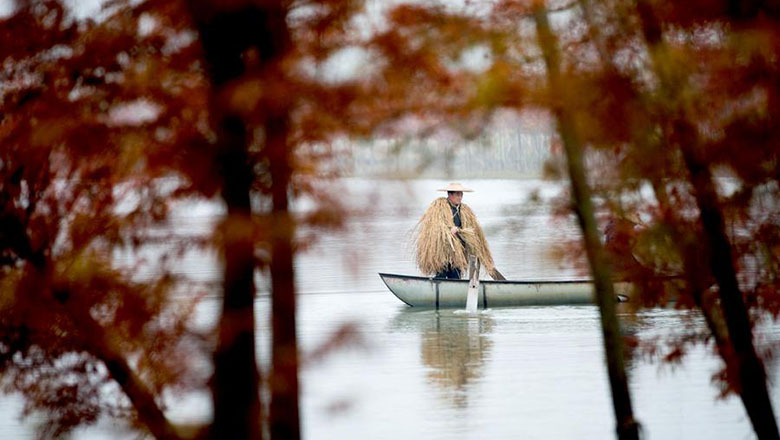Snub-nosed monkeys better with more trees
Updated: 2015-11-18 08:14
By Sun Ye(China Daily)
|
||||||||
 |
|
A golden snub-nosed monkey in Shennongjia Nature Reserve in Hubei province.[Photo by Sun Ye/China Daily] |
Snub-nosed monkeys are known to be genteel and affable-even when they make a tooth-baring face, they are really showing fondness.
But it still took Yang Jingyuan's team years of effort before the monkeys let down their guard and let themselves be known.
Yang, head of the Research Institute of Shennongjia Nature Reserve, has worked on the mountain range for nearly two decades.
Shennongjia, in Central China's Hubei province, is now one of the country's best-conserved natural areas. Known for terrains that unfailingly remind one of Chinese traditional landscape paintings, it's home to many rare animals and plants, including the golden snub-nosed monkeys with their rare blue faces. A recent survey on the region's natural resources has found 10 new species of animals and insects in addition to the 4,000-plus species already recorded.
But Shennongjia wasn't always the pillar of conservation that it is today. From the 1960s to the early '80s, rampant, unregulated cutting of tress reduced the mountain's forest cover to 64 percent, providing for around 3 million cubic meters of timber.
Golden snub-nosed monkeys live on plants. Local Chinese usnea, a gray-green lichen, is their favorite food. A deteriorating environment with shrinking woodlands made life harsh for the monkeys. In 1985, there were only 501 snub-nosed monkeys in the area.
The area became a national nature-reserve district in 1986, thereby slowly turning to the "protection first" policy it still upholds today.
Felling trees was banned 15 years ago. Residents in the mountains who used to depend on the timber business were gradually moved to nearby towns like Muyu and started to engage in businesses like eco-tourism.

 Panda cub Bei Bei to make public debut on Jan 16
Panda cub Bei Bei to make public debut on Jan 16
 Landmarks of Paris reopen for tourists after terrorist attacks
Landmarks of Paris reopen for tourists after terrorist attacks
 French warplanes strike Islamic State Syria bastion
French warplanes strike Islamic State Syria bastion
 High-tech fair gears up in Shenzhen
High-tech fair gears up in Shenzhen
 Biggest wild Chinese sturgeon seeks treatment in Beijing
Biggest wild Chinese sturgeon seeks treatment in Beijing
 Tranquility in the ‘Water Forest’
Tranquility in the ‘Water Forest’
 Xi, Putin meet at G20 summit, renewing pledges on cooperation
Xi, Putin meet at G20 summit, renewing pledges on cooperation
 Skimming the surface
Skimming the surface
Most Viewed
Editor's Picks

|

|

|

|

|

|
Today's Top News
Chinese president arrives in Turkey for G20 summit
Islamic State claims responsibility for Paris attacks
Obama, Netanyahu at White House seek to mend US-Israel ties
China, not Canada, is top US trade partner
Tu first Chinese to win Nobel Prize in Medicine
Huntsman says Sino-US relationship needs common goals
Xi pledges $2 billion to help developing countries
Young people from US look forward to Xi's state visit: Survey
US Weekly

|

|








